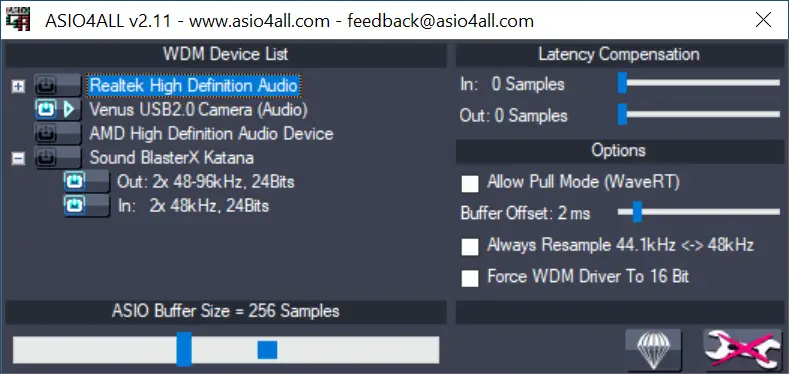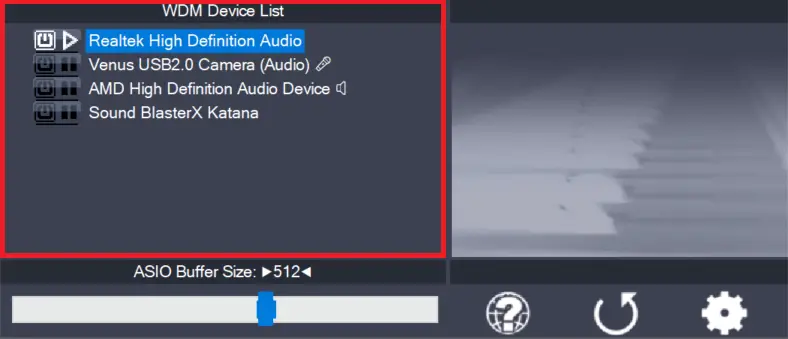- Combined 32/64 bit version, supports Win 98SE/ME/2k/XP/MCE/2003/XP64 and Vista/Windows 7/Windows 8.x x86/x64
- After more than 4 years, of course, this is a *major* update!
Changes since version 2.10:
- Improvement: Make an attempt to reclaim an unavailable audio device, includes workaround for a (confirmed) Windows bug.
- Improvement: Add general fixed factor resampling capabilty.
- Improvement: Latencies now displayed for the preferred buffer size, if host elects to violate the spec.
- Improvement: Support for single common sample rate that is *not* a multiple of 8 or 11.025.
- Workaround: Realtek PULL mode not supported for “odd” ASIO buffer sizes. Symptom was a “Beyond Logic” error depending on. ASIO buffer size.
- Fix: Potential application compatibilty issue regarding ASIO reset request message.
- Fix: Increased latency in x64 mode.
- Fix: Pull mode _and_ latency display now working.
- Fix: ASR issue with MSVC 2013 x64 -> Performance impact with hosts compiled with MSVC 2013.
- Fix: UI appearance with different system locale.
- Fix: Hang with some x64 hosts.
- Fix: Crash on exit of A4Apanel64.exe.
- Fix: Minor memory leak.
- Fix: All known 2.11 Beta(1,2) regressions fixed.






Leave a Reply